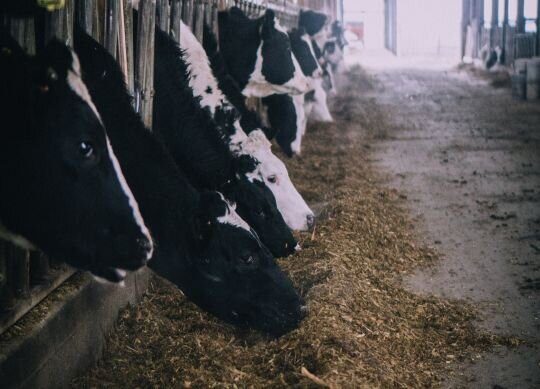Feed Cost Per Cow Per Day: Today’s crucial metric
The 2021 climate of high feed costs and tepid milk prices are creating a tenuous financial scenario for most U.S. dairy farms. Penn State Dairy Extension specialist Virginia Ishler said current conditions are mimicking those of 2012, when feed prices soared to unprecedented highs. “Using farm financial data from 2020 and projecting costs into 2021 and beyond, most operations will be extremely vulnerable to maintaining a positive cash flow, especially if high feed prices continue,” she stated in a Penn State Dairy Extension bulletin.
Penn State Dairy Extension has developed a cash-flow analysis comparing a range of breakeven cost of production to cash flow from milk revenue. “Operations with cost of production exceeding $19.00/cwt. will have an uphill challenge in keeping feed costs below their projected maximum,” said Ishler.
Drilling down to the per-cow level can help keep a tighter handle on overall cost of production. Even using correct prices for home-raised forages, most operations exceed $5.50/milk cow/day during periods of “normal” feed costs.
In an example factoring in low milk prices, a gross milk price of $17.00/cwt. for a herd producing an average of 70 pounds/cow/day, would result in a maximum feed cost/cow/day of $4.66. A bump in milk production and/or milk price would obviously help, but the Penn State calculator clearly indicates that “production at any cost” does not pencil out well. A herd averaging 75 pounds/cow/per day can afford a per-cow daily feed cost of $8.32 when milk price is $21.00/cwt. But dropping the milk price to $18.00/cwt. shows they must shave individual-cow daily feed cost to $5.18 to break even.
External market influences also could impact these figures. Severe heat stress could drop milk production; drought may drive the need to purchase forages in an already-tight marketplace; and high-priced commodities can quickly skew cost of production.
The Penn State Dairy team advises running cost-versus-payoff projections as a regular exercise to keep a constant fix on feed costs versus reward. In some cases, expensive ration elements may not enhance production enough to compensate for low milk prices. On the other hand, cutting costs too severely can limit future health, production, and reproduction. Ultimately the breakeven cost of production is the key metric for preserving a herd’s long-term financial viability. Utilizing Income Over Feed Costs can balance all aspects of maintaining a productive and profitable herd.
Nutritionists can play a vital role in helping producers control costs by sourcing affordable feedstuffs; recommending alternative ration ingredients; and making other ration changes to trim per-cow feed costs without jeopardizing animal performance.
Nobis Agri Science nutritionists utilize external resources to keep a handle on feed costs and have access to calculators to track income over feed costs using a variety of feeding and production strategies. Contact your Nobis Agri Science nutritionist with any questions about how you can manage your income over feed costs.
Adapted from Maureen Hanson for Dairy Herd Management.



